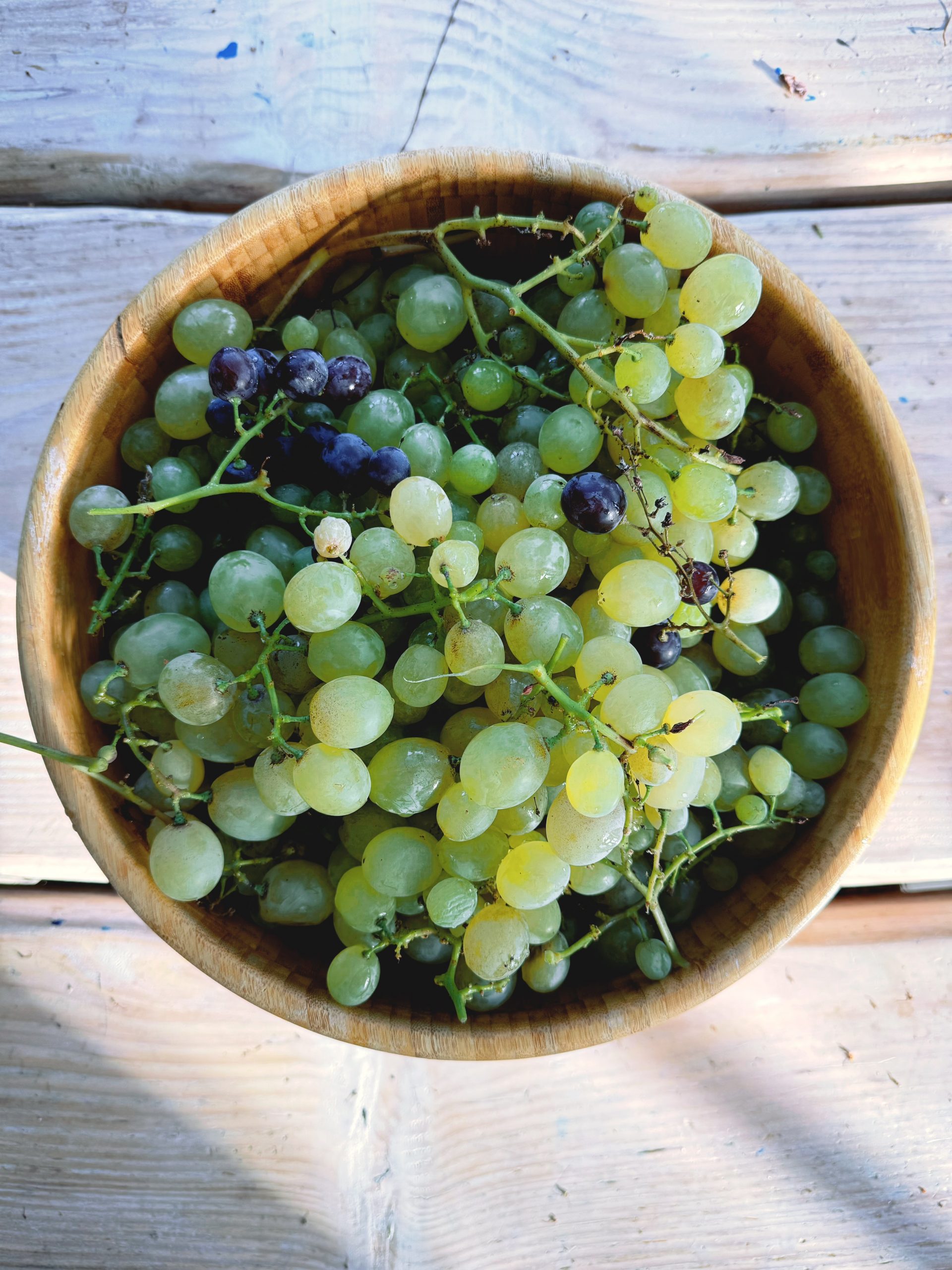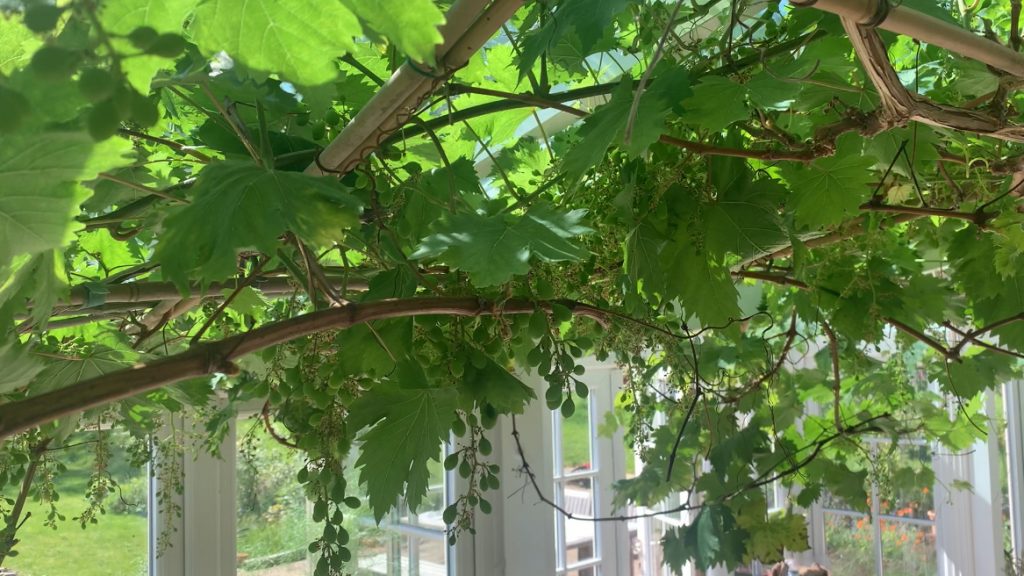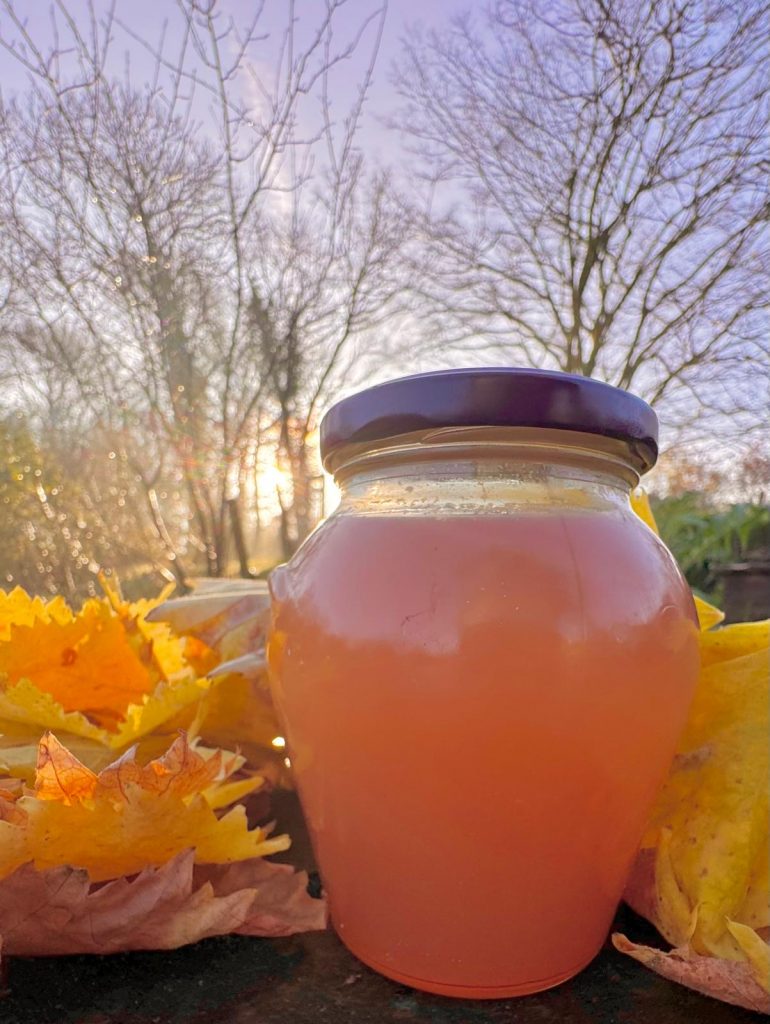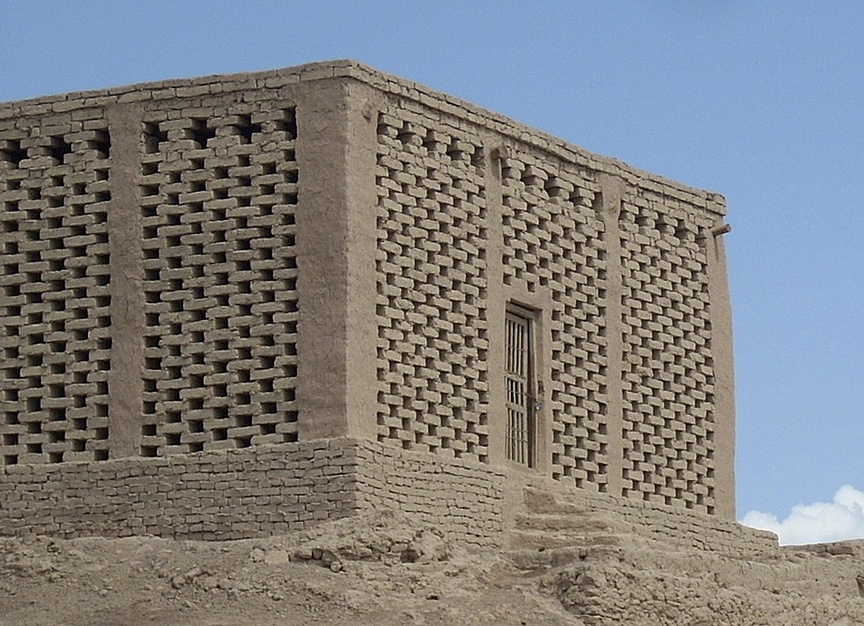VITIS

As I write, the sun is setting and the last sunshine of the day is quickly disappearing at 3 pm. It is November and I just spent the sunny morning picking, washing and sorting out the remains of this year’s great grape harvest. The good ones will be shared, the slightly soft ones will turn into jelly and the moldy ones will go into compost.
As I was doing this, my mind travelled back to when I was young. I was born in the coldest part of China close to the Russian border. As the winter temperature often hovers around -20C a fridge was no use. Our windows had two layers, two double glazing and in between was a 15cm air gap, which turned into a natural fridge in winter. In this, I would store away bags of grapes and Sharon fruits in autumn to enjoy slowly in winter when hardly any fresh fruits are available. The bite into a crunchy, juicy, frozen grape is a taste I am still fond of.
Thanks to the Grape Valley in Turpan, Xinjiang, China is the world’s largest producer of green raisins. The most famous variety is the seedless white grape, the Manaizi (Mare’s nipple). You would know when it is ripe when the grape turns into this translucent white-green color. I managed to source a vine and tried to grow it in my conservatory but alas had no success.
Aside from the famous produce, the landscape itself of the Grape Valley is also remarkable. Situated deep in the heart of arid desert country, over hundreds of years the valley has been cultivated into a green oasis in support of the grape agriculture. The huge 8 km-long plantation filled with grape and fruit orchards covering about 400 hectares seems at first a surprising mirage, surrounded as it is by arid desert. Once you are in the valley, you will immediately find yourself in a green kingdom, where among orchards and vineyards, there are small ponds and waterfalls. The source of water comes from the Tien Shan mountains collected and channelled through the world-famous irrigation system called “Karez Well”. The ancient grape-drying building, Chunche, is a peculiar and recognisable piece of architecture too with striking wonky hit-and-miss brickwork.
Trying again after the Manaizi didn’t take in the conservatory environment, after some further research, I planted another variety, Muscat of Alexandria, in my south-facing unheated conservatory. This is an ancient variety, considered by wine experts to be one of the oldest unmodified vines still in existence, although the grapes never last long enough to get to the wine stage with us!. Whilst the vine is self-pollinating, given lack of wind or natural pollinators, I or rather my husband will use a brush to hand pollinate the flowers in spring. It is a pleasingly vigorous vine, and reliably produces between 10- 40 big bunches of golden-green grapes with a sweet intense muscat flavour. Climbing over half of our south-facing conservatory roof, it provides dappled shade in the hot summer days.
A couple of years later I also planted its family relation – the Black Hamburg, which is a cross between the Schiava Grossa and Muscat of Alexandria first introduced by the Head Gardener of Wrest Park in 1850. In time I also plan to add a Strawberry vine Vitis Fragola once I make a space for it. Hardy, It is probably the only grapevine that can produce tasty edible fruits outdoors in UK. If you have a warm, protected south-facing wall, it is worth trying as nothing beats the joy, in the cold damp of England, of reaching up and picking a bunch for the table.
Shan Liu Design
Garden designer, Plant lover, Thalassophile, Mum of two



2 Responses